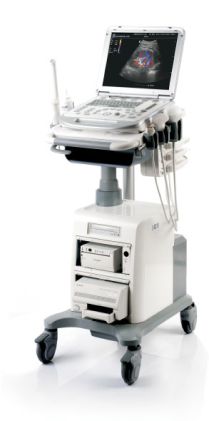 Ultrasound-guided injections allow the practitioner to visualize the needle in real time as it enters the body and traverses to the desired location. This assures that the medication is accurately injected at the intended site. Despite good intentions, even in the most experienced hands, blind (injections performed without imaging) injections are not 100% accurate and in some joints accuracy is as low as 30%-40%. With ultrasound guidance the accuracy of nearly every joint injection exceeds 90% and approaches 100% in many. Additionally, ultrasound guided injections have been shown to be less painful than blind injections. Ultrasound injections also have the advantage of giving “real time” and “dynamic” feedback that the patient and the doctor can see and use immediately. The doctor is able to watch the desired treatment being delivered to the intended target and even visualize surrounding structures both before, during and even after the procedure.
Ultrasound-guided injections allow the practitioner to visualize the needle in real time as it enters the body and traverses to the desired location. This assures that the medication is accurately injected at the intended site. Despite good intentions, even in the most experienced hands, blind (injections performed without imaging) injections are not 100% accurate and in some joints accuracy is as low as 30%-40%. With ultrasound guidance the accuracy of nearly every joint injection exceeds 90% and approaches 100% in many. Additionally, ultrasound guided injections have been shown to be less painful than blind injections. Ultrasound injections also have the advantage of giving “real time” and “dynamic” feedback that the patient and the doctor can see and use immediately. The doctor is able to watch the desired treatment being delivered to the intended target and even visualize surrounding structures both before, during and even after the procedure.
Although there are many different types of imaging that can be used to assist with injections, ultrasound has a few distinct advantages.
- Ultrasound has no radiation. Flouoroscopy, a type of real time X-ray, (not ultrasound) allows the provider to easily visualize the joint making injections easier, however, fluoroscopy is associated with repeated doses of radiation. Additionally with fluoroscopy the providers are unable to visualize surrounding soft tissue structures including tendon, blood vessels or nerves that may be in the path of the needle. This could lead to increased pain or other complications from the injection.
- Ultrasound allows us to visualize the bony joint as well as all of the surrounding structures. Moving the ultrasound probe the practitioner can visualize what may be in the path of the needle and avoid any unwanted complications before they happen.
- Ultrasound is able to identify fluid better than conventional radiographs and can see fluid that may have accumulated in and around joints, tendons, muscles, nerves and other soft-tissue structures. CT-guided (or CAT Scan) injections are also frequently used to assist in delivering treatments. With the CT we are able to get a 3-D view of the joint to be injected and can accurately deliver the intended medication, however, these tests come with an increasingly large dose of radiation, they are expensive and time-consuming.
- Ultrasound injections have been shown to be as accurate as these other imaging-modalities with less cost, improved soft tissue visualization without the associated radiation.
- Ultrasound-guided injections have been extensively studied and have been found to have very few complications.
The risks associated with these procedures are the same as any type of injection: incomplete reduction of pain, bleeding, damage to surrounding structures and infection. The overall risks for injections are very low and the use of ultrasound guidance may further reduce some of these risks.
Ultrasound is beneficial when performing injections in the knee, shoulder and hip; as well as many other structures throughout the body.
